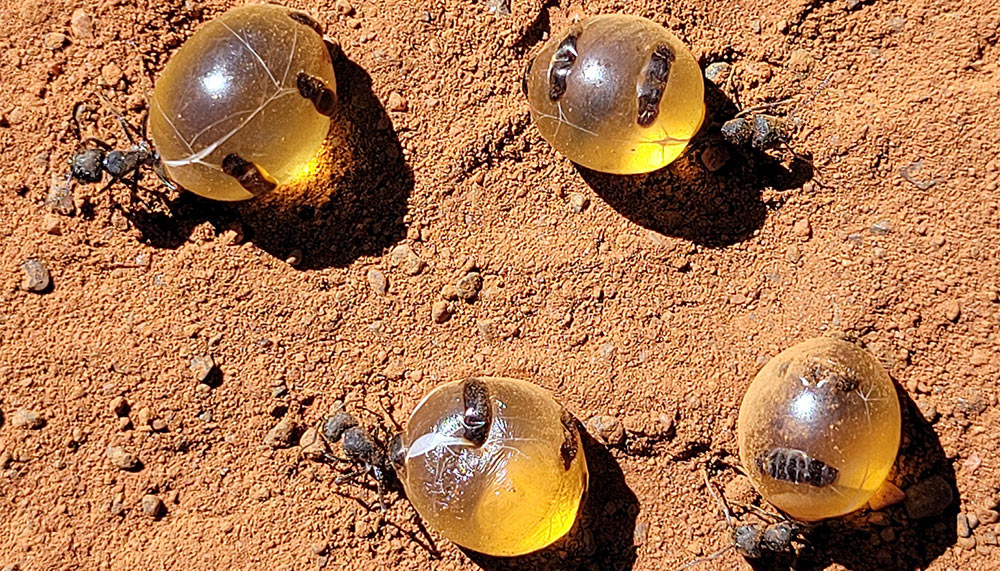The unusual chemical composition of honey made by honey ants has been studied for the first time.
Story Ken Eastwood
Associated mainly with mulga, honey ants, or honeypot ants, dine on tiny sap-sucking insects. Some of the ants become a larder for the rest of the colony. “These ants are known as living pantries – they’re force-fed by other ants until they can’t move,” says Connie Locher, an associate professor at The University of Western Australia, who conducted the analysis for the Cooperative Research Centre for Honey Bee Products. The swollen abdomens of the living pantries, full of golden honey, can be as big as marbles. “When the other ants need some honey, they regurgitate it.”
Enjoyed for thousands of years by First Nations people, the ants are now being harvested and sold to high-end restaurants where they are used to decorate desserts. “The first taste you get is the sweet, typical honey taste, but if you hold it in your mouth, it becomes more complex – almost like a fermenting flavour,” Connie says. In the study, taste panellists described it as less sweet and slightly sour compared to honey from bees.
Bee honey usually contains more fructose than glucose, but honey ant honey has more glucose than fructose. “We also found evidence for another sugar that we couldn’t identify,” Connie says. The honey ant honey contains more liquid than bee honey and has a range of other compounds that have yet to be identified.
Connie says that before the Cooperative Research Centre wraps up this year it will establish an Australian honey library to authenticate and classify Australian honeys.










